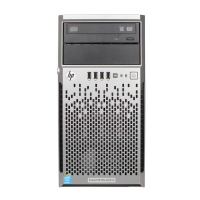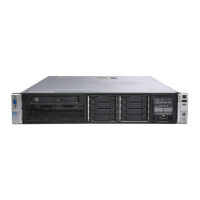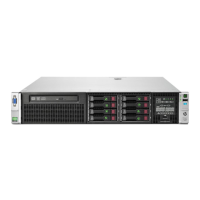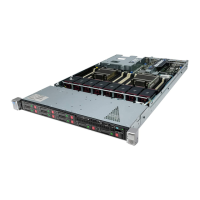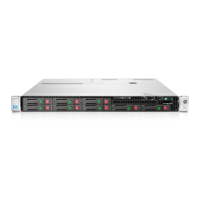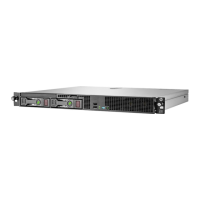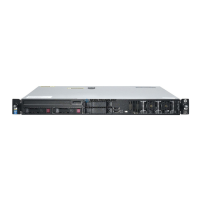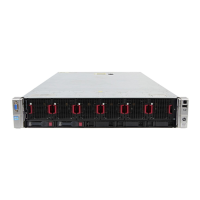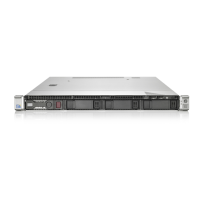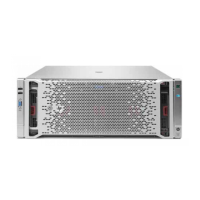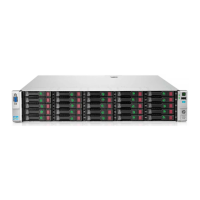Hardware options installation 49
Smart Array cable routing from the secondary PCI riser cage is only supported in the 8+8 SFF drive
configuration.
9. Connect the rest of the drive cables required in this drive configuration. For more information, see
"Storage cabling (on page 85)."
10. Install the air baffle (on page 24).
11. Install the access panel (on page 23).
12. Install the server into the rack ("Installing the server into the rack" on page 33).
13. Install the drives ("Drive options" on page 36).
CAUTION: To prevent improper cooling and thermal damage, do not operate the server unless
all bays are populated with either a component or a blank.
14. Power up the server (on page 20).
Controller options
The server ships with an embedded Smart Array B120i controller. For more information about the controller
and its features, see the HP Dynamic Smart Array RAID Controller User Guide on the HP website
(http://www.hp.com/support/DSA_RAID_UG_en).
To configure arrays, see the Configuring Arrays on HP Smart Array Controllers Reference Guide on the HP
website (http://www.hp.com/support/CASAC_RG_en).
Upgrade options exist for the integrated array controller. For a list of supported options, see the QuickSpecs
on the HP website (http://www.hp.com/support).
The server supports FBWC. FBWC consists of a cache module and a capacitor pack. The DDR cache module
buffers and stores data being written by the controller. When the system is powered on, the capacitor pack
fully charges in approximately 5 minutes. If a system power failure occurs, a fully charged capacitor pack
provides power for up to 80 seconds. During that interval, the controller transfers the cached data from DDR
memory to flash memory, where the data remains indefinitely or until a controller retrieves the data.
The data protection and the time limit also apply if a power outage occurs. When power is restored to the
system, an initialization process writes the preserved data to the storage drives.

